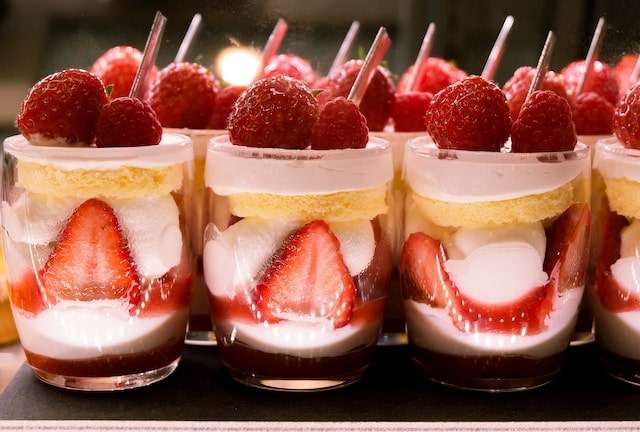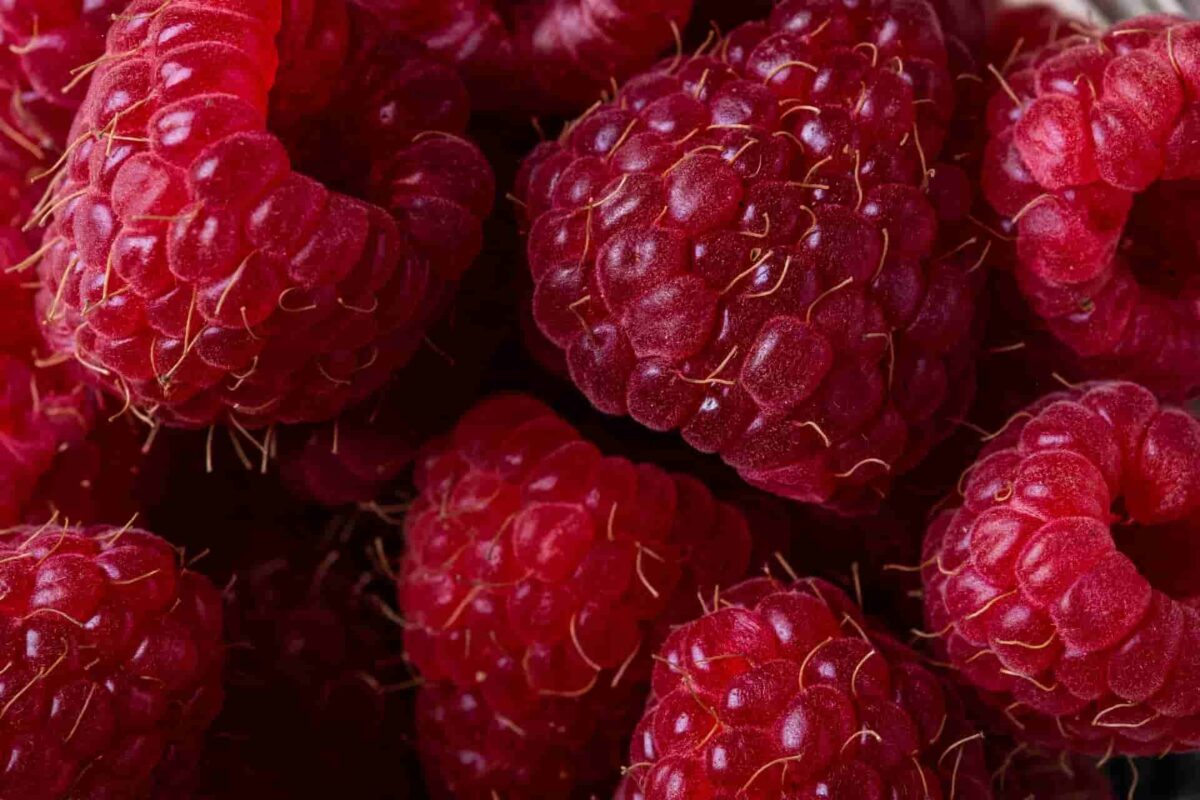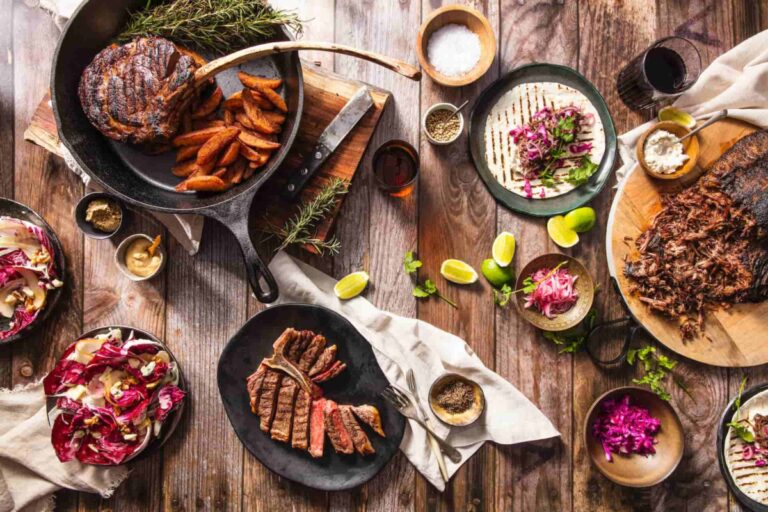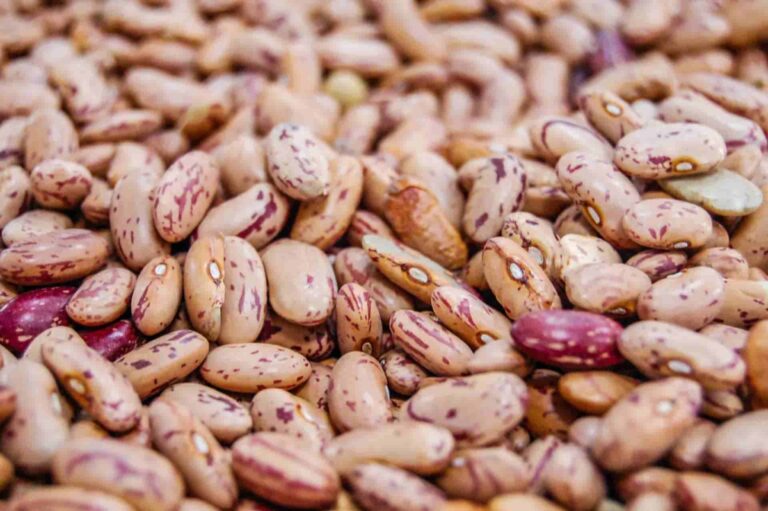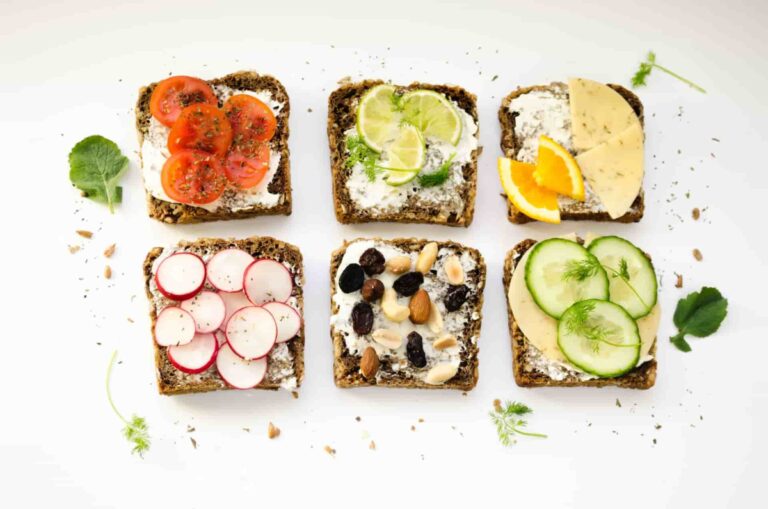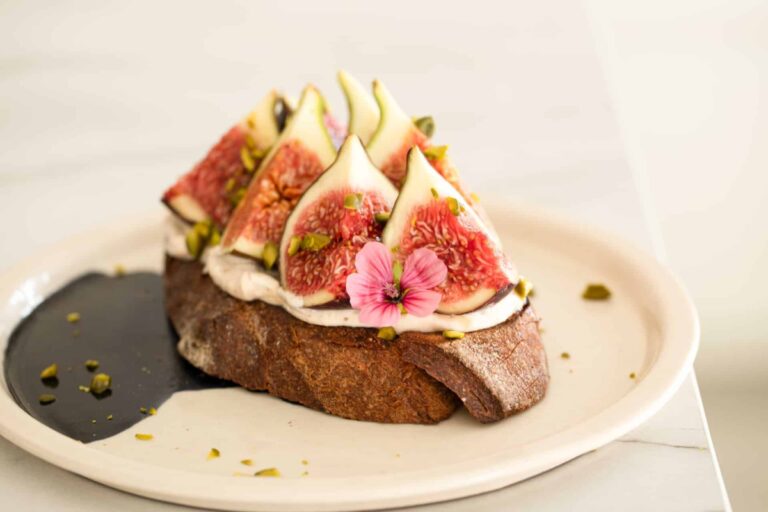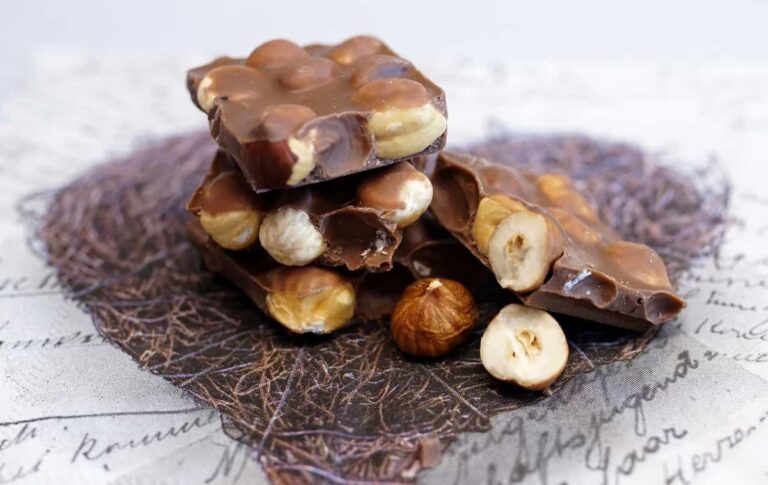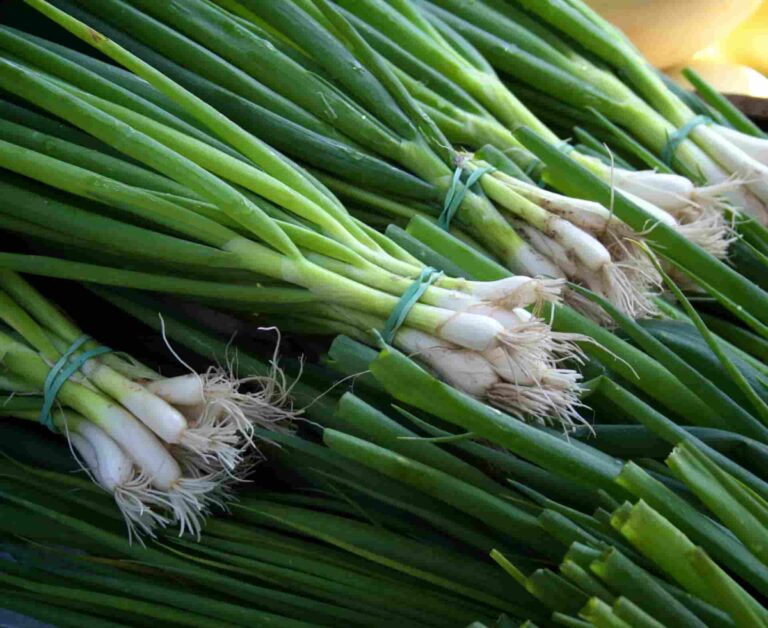33 free raspberry kitchen insights and benefits
Did you know where the name of the fruit, raspberry, came from?
- The word “raspberry” comes from either raspise, which was defined as “a sweet rose-colored wine” in the middle of the 15th century, from the Anglo-Latin vinum raspeys, or from raspoie, which is of Germanic origin and means “thicket.” The term may have originated from its look, which resembles that of a surface with a rough texture, which is connected to the Old English word rasp or “rough berry.”
- The spectrum of hues includes red, purple, golden, black, and yellow! There are many different kinds of rounded raspberries, including Asian raspberries, black raspberries, American red raspberries, snow raspberry, and blossoming raspberry, to name just a few of the various variations. There are numerous distinct characteristics that set each one apart from the others, including a wide range of hues, tastes with varying degrees of sweetness and acidity, textures, and amounts of juicy goodness, and more!
- Did you know that a raspberry is composed of several little fruits called “drupelets” that are crowded around a central core? If not, now you do. Every drupelet on a raspberry has one seed, and a typical raspberry will have anywhere from 100 to 120 seeds.
- Raspberries were initially cultivated in Europe, but now you can find them in markets all around the globe. Russia is now the biggest producer of raspberries in the world, followed closely by Poland, the United States of America, Serbia, and Mexico.
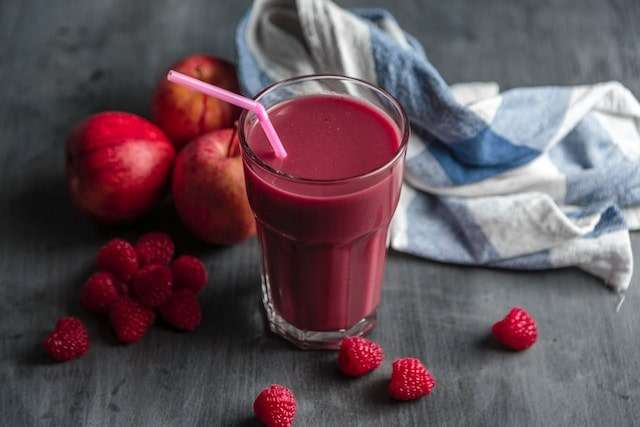
Raspberry nutrition values and health benefits
- Raspberries are a good source of vitamin A and C, and they also provide small amounts of other vitamins and minerals such as thiamine, riboflavin, B6, calcium, and zinc. Vitamin C, a water-soluble component essential for immune system function and iron absorption, may be found in abundance there, making up more than half of the RDI.
- Plant compounds known as antioxidants help your cells resist and recover from oxidative stress, also known as free radical damage. Several diseases and conditions, including cancer, diabetes, and cardiovascular disease, have been related to oxidative stress.
- Raspberries may contain significant levels of vitamin C, quercetin, and ellagic acid, all of which are powerful antioxidants. When compared to other berries, raspberries have an antioxidant content around the same as strawberries but about half as high as blackberries and a quarter as high as blueberries.
- Raspberries are a good choice for people watching their carbohydrate consumption since they are low in carbs and high in fibre. Raspberries provide 14.7 grammes of carbs per cup (123 grammes), 8 grammes of fibre per cup, and 6.7 grammes of net digestible carbohydrates per cup.
- Similarly, raspberries are not expected to raise blood sugar levels. The glycemic index (GI) of a food is a measure of how quickly it causes blood sugar levels to rise. Although the glycemic index of raspberries has not been determined, in general, berries have a low glycemic load. Some studies have shown that eating raspberries may enhance insulin sensitivity and lower blood sugar levels.
- In addition, the high quantity of tannins in raspberries prevents alpha-amylase, a digestive enzyme needed to break down starch, from doing its job. Raspberries’ ability to block the enzyme alpha-amylase suggests they may help reduce the impact of a meal on blood sugar levels by reducing the quantity of carbs absorbed.
- Because of their anti-inflammatory properties, raspberries may help some arthritis sufferers feel better. The anti-arthritic properties of raspberries are attributed to their ability to block COX-2, the enzyme responsible for the inflammation and pain of arthritis.
- There is a lot of buzz about the weight-loss benefits of raspberry ketone tablets. However, very little research has been conducted on them. The only human study on raspberry ketones for weight loss used a supplement that also included several other substances, including caffeine, making it hard to determine whether or not raspberry ketones were responsible for the study’s positive effects. There is no proof that raspberry ketone supplements help you lose weight, although it may be helpful to consume fresh, whole raspberries.
- Raspberries, thanks to the antioxidants they contain, may help the body age more slowly by neutralising free radicals. Antioxidants have been found to have anti-ageing characteristics in humans, and they have also been linked to increased longevity in a number of animal models.
- Vitamin C, found in abundance in raspberries, is necessary for radiant skin. It may help repair UV-induced skin damage and stimulate collagen production. In an eight-week study, rats’ motor skills improved when their diet included either 1 percent or 2 percent raspberries. Strength and equilibrium were both improved.
100g of raspberry has 53 calories (221kj), 1.2g protein, 0.7g fat, and 12g carbs, including 7g fibre.
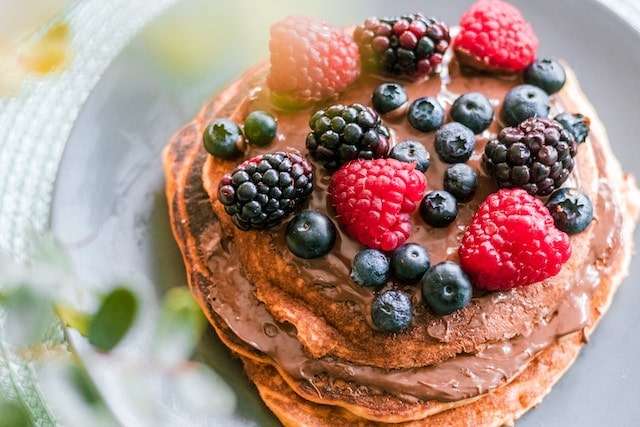
How to store raspberry and how to buy them
- Raspberries rapidly develop mould and become mushy, which means that you have just one to two, and in some cases up to three days to consume them after bringing the box home. Pick for the very finest raspberries money can buy so you can be sure they will keep fresh for the whole two days and won’t get covered with mould over the course of the night. In order to do this, carefully examine the package from top to bottom as well as the sides, looking for any indications of dampness, mushy or discoloured raspberries, or mould.
- Keep raspberries in the refrigerator in the container they came in without washing them beforehand. It is important not to leave them at the back of the refrigerator since the temperature there is too low for the fruit. Keep them at the front of a shelf where you will see them often so that you will be more likely to consume them before they go bad.
- If you need to package your raspberries, you should choose a box or container that is shallow and has holes in it so that air can flow through it. The raspberries that are on top of a shallow container won’t be able to crush the ones that are beneath. If you do not have one, you may make do with a plastic bag by poking some holes in it.
- If you are concerned that your raspberries could go bad if you store them in the refrigerator, you can easily preserve them by freezing them. To freeze raspberries, you will need a big baking sheet or tray, and then you will need to follow these steps:
- Rinse and pat dry. The removal of any debris and grime that may be present makes washing an absolute need before consuming anything. This is something that we do today since washing fresh raspberries is a lot simpler than washing mushy ones that have just been thawed out of the freezer. After giving them a good rinse, lay them out on some paper towels to dry and give them a quick pat. It is preferable for the berries to retain as little moisture as possible.
- Pre-freeze. Make sure that none of the berries come into contact with one another as you spread them out in a single layer on a baking sheet or a tray. Place the tray with the berries in the freezer for at least a few hours, but preferably overnight, so that the berries may freeze completely. Utilise a silicone mat in the event that you do not want them to adhere to the tray.
- Keep frozen for the foreseeable future. Place the frozen raspberries in a jar or bag that can be stored in the freezer. If you want to use a bag, be sure to remove as much air from it as you can before you close it. Put everything into the freezer, and if you like you may add a label with your name and the date on it.
- Raspberries that have been defrosted will not be as firm as fresh raspberries, which is a significant downside for certain applications (such as in a fruit salad or if you are topping your yoghurt). Raspberries that have been thawed can work just fine for a number of other applications, including baking and smoothie making, where the texture isn’t as important.
- Raspberries that have mould on them should be thrown away. And if the cloudy region was rather extensive, you may want to consider disposing of the fruit that were close by just to be on the safe side.
- Are mushy or have changed colour. Even if they aren’t technically ruined, they don’t taste very good and normally develop mould within a day or two after being opened. You also have the option of eating them right then and there (don’t forget to clean them first! ), which will save you from having to throw them out later.
- Put out the odour. Even if everything seems to be in order, you should toss the berries if they have an odd odour.
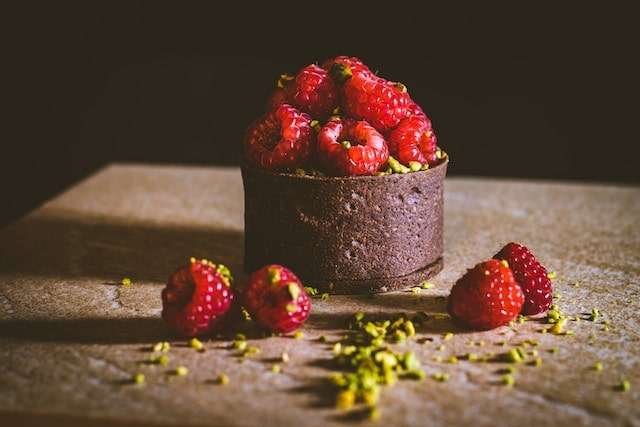
Cooking techniques, secrets, and tips from the kitchen
- Raspberries are very delicate and must be handled with great care to prevent them from being bruised. The quality of the fruit will be negatively affected if it is bruised. If you need to clean the raspberries before using them, do so just before you consume them. Rinse carefully with cold water, ensuring that you use as little water as possible. Drain, then lay down on a dry paper towel and smooth out gently. Take out any berries that are damaged or any undesired detritus. After they have been rinsed, prepare them in the way of your choice as quickly as possible.
- Raspberries may be pureed and combined with sugar to make a sauce or coulis that can be included in a variety of sweet treats, including but not limited to cakes, custards, puddings, ice cream, and sorbets.
- After giving the raspberries a thorough washing and drying, put them in a dish and use a fork to mash them into a purée.
- Put the raspberry purée in a sieve set over a clean dish, and then use the back of a spoon to press the mashed raspberries through the sieve and into the basin below.
- To get the required level of sweetness, raspberries may be sweetened with either granulated or powdered sugar. If you want the colour of the coulis to be even more vibrant, you may add more lemon or orange juice to it.
- If you already know how to make it, raspberry vinaigrette is really simple to prepare at home, and the end result will taste far more fresh than the store-bought kind. A nutty or fruity salad would go particularly well with a vibrant and colourful vegan raspberry vinaigrette, which is also a popular option to pair with a spinach salad. The raspberry vinaigrette is a simple but classy alternative. A lot of salad dressings add flavour by using herbs or saltiness (or are artificially sweetened with a lot of high fructose corn syrup), so the acidic and somewhat sweet taste of raspberry vinaigrette is a good change of pace to try out instead. If you want a sweet treat with your salad, add some cranberries, pine nuts, or walnuts, and then drizzle over some raspberry vinaigrette salad dressing.
- A well-known recipe for raspberry chipotle chilli sauce has a flavour that is both sweet and savoury, but it also has a bit of a kick to it. Because of the Smokey flavour of the chipotle chilies, which are just jalapeno peppers that have been smoked and dried, or as a glaze for meat. This is a great alternative to tomato-based barbecue sauces if you’re looking to switch things up a little. In addition to that, it is an excellent method for making use of seasonal raspberries harvested from your garden. You shouldn’t restrict the usage of this raspberry chipotle sauce to only grilled meat and other similar dishes. When combined with cream cheese, it makes a delicious dip that goes well with crackers, celery, carrots, and other vegetables.
- The Chinese raspberry snowflake cake is a dessert that is often served cold and is quite simple to prepare. It is also highly tasty. It’s one of those sweets that’s ideal for making on a warm summer’s day, and just hearing the word “snowflake” gives you the impression that consuming this dish would help you feel more refreshed after a long day in the sun. Raspberries, milk, cream, potato starch, gelatine, and desiccated coconut are the ingredients that go into making this traditional Chinese dessert. I chose to make this dessert using raspberries because I really enjoy the colour of raspberries, but you could also make it with mango, strawberries, blueberries, or any other kind of fruit you want.
- Raspberry pairs well not just with other types of berries, but also with almond, apricot, chocolate (particularly dark chocolate), cinnamon, citrus, ginger, hazelnut, mint, nectarine, peach, plum, rhubarb, thyme, and vanilla. Other types of berries also work well. Raspberry cocktails are often mixed with a variety of alcoholic ingredients, including brandy, Champagne, orange liqueurs, rum (especially black rum), tequila, and sweeter red wines.
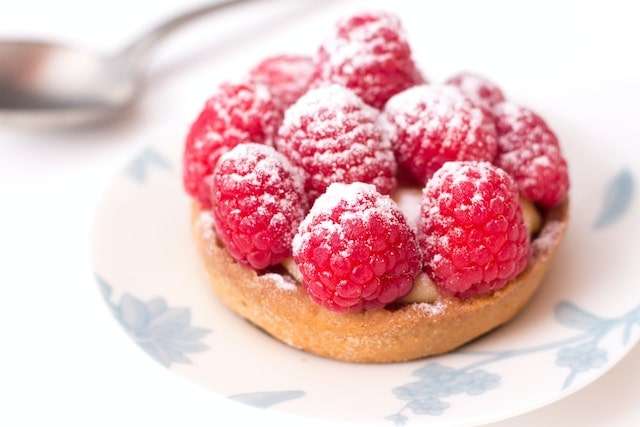
History of raspberry’s from the beginning until today
- The red raspberry (Rubus idaeus), originally from Asia Minor and North America, has gained popularity as an ornamental plant. The people of Troy gathered wild fruits from the slopes of Mount Ida near their city during the time of Christ.
- Palladius, a Roman agriculturalist who flourished in the fourth century, left behind written evidence of domestication, and seeds have been discovered in British Roman forts. As a result, the Roman Empire is regarded with introducing and popularising horticulture across Europe.
- In Mediaeval Europe, people collected wild berries for their medicinal and practical use. The pigments in their juices were used in paintings and illuminated manuscripts for centuries. Back then, only the affluent could afford to eat at their lavish banquet.
- Berry cultivation received early support from King Edward I (1272–1307), and by the seventeenth century, British gardens were bursting at the seams with fruit trees and berry bushes. By the seventeenth century, berry cultivation techniques had expanded across Europe.
- Native Americans were using and eating berries before European immigrants arrived in the New World. Berries were dried to extend their shelf life and make them easier to transport due to the nomadic nature of this culture. Raspberries were another crop that settlers brought from Europe to the new colonies, where they flourished due to the favourable environment.
- In 1771, when William Price began selling plants from his nursery for profit, the modern nursery business was born.
- After moving to Mount Vernon in 1761, George Washington planted extensive gardens, among which was a berry farm. About forty separate species were recognised by 1867. Several states, including New York, Michigan, Oregon, Washington, Pennsylvania, Ohio, Illinois, and Indiana, became major industrial hubs after the American Civil War. About 2,000 acres of land had been used for farming by 1880.
- Raspberries are a popular berry with a reputation for having the strongest taste of any berry. They may be consumed in their raw form, cooked into jam, or utilised as a flavouring agent in many foods and drinks.
